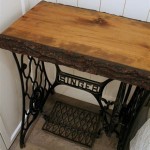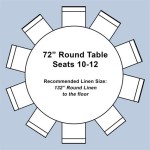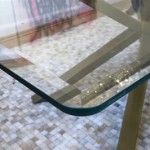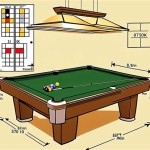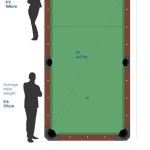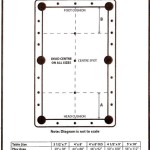DIY Paint Kitchen Table: A Comprehensive Guide
Revitalizing a kitchen table through painting represents a cost-effective and personalized method for updating a home's interior. This project offers a tangible way to inject new life into a tired piece of furniture, allowing for customization to precisely match evolving aesthetic preferences or existing kitchen decor. The process, while relatively straightforward, requires careful planning, preparation, and execution to achieve a durable and visually appealing finish. This article provides a detailed guide to painting a kitchen table, covering material selection, preparatory steps, painting techniques, and protective finishing.
Key Point 1: Strategic Planning and Material Acquisition
The success of any DIY painting project hinges on the initial planning phase, which encompasses assessing the existing table’s condition and selecting appropriate materials. Before commencing any work, a thorough inspection of the table is necessary. This involves identifying any existing damage such as scratches, dents, or loose joints. Addressing these issues prior to painting is crucial for achieving a smooth and uniform final product. Repairing any structural weaknesses ensures the table's longevity, while filling imperfections creates a level surface for the paint to adhere to effectively.
Material selection is equally vital. The choice of paint significantly impacts the project's outcome, influencing both the aesthetic appearance and the durability of the finish. Options include latex paint, oil-based paint, chalk paint, and milk paint, each possessing unique characteristics. Latex paint is known for its ease of use, quick drying time, and low odor. Oil-based paint offers superior durability and a smooth, glossy finish, but it requires longer drying times and specialized cleaning solvents. Chalk paint is prized for its matte finish and ease of distressing, while milk paint provides a historical aesthetic and requires mixing prior to application. The selection should align with the desired aesthetic and the intended level of wear and tear the table will endure.
In addition to paint, several other materials are essential. These include: sanding paper (various grits), a degreasing cleaner, primer, paintbrushes or rollers, painter's tape, drop cloths, wood filler (if needed), and a sealant or topcoat. The specific grit of sandpaper needed will depend on the initial condition of the table. A coarser grit is used for removing old finishes or addressing imperfections, while finer grits are used for smoothing the surface before painting. A high-quality primer is crucial for ensuring proper paint adhesion and preventing bleed-through from underlying stains or wood tannins. The choice between brushes and rollers depends on the desired texture and the size of the table. Rollers are typically more efficient for covering large, flat surfaces, while brushes are better for detail work and intricate areas. Painter's tape is indispensable for creating clean lines and protecting surrounding surfaces. Drop cloths protect the work area from paint splatters and spills.
Key Point 2: Meticulous Preparation and Surface Priming
Proper preparation is the cornerstone of a professional-looking paint job. The first step involves thoroughly cleaning the table. This removes any dirt, grease, or grime that could impede paint adhesion. A degreasing cleaner is recommended for this purpose, ensuring that all surfaces are free from contaminants. After cleaning, the table should be allowed to dry completely.
Sanding is the next critical step. The purpose of sanding is to create a slightly rough surface that the primer can grip. The specific sanding technique depends on the table's existing finish. If the table is covered in a glossy varnish or polyurethane, sanding is essential to break the surface and provide adequate adhesion. If the table has a matte finish, a light sanding may suffice. Start with a coarser grit sandpaper to remove any imperfections or old finishes, and then gradually transition to finer grits to create a smooth surface. Sand with the grain of the wood whenever possible to minimize scratches. After sanding, it is imperative to remove all sanding dust. A vacuum cleaner equipped with a brush attachment is ideal for this purpose, followed by wiping down the surface with a tack cloth.
Priming is a crucial step that should not be skipped. Primer creates a uniform surface for the paint to adhere to, prevents bleed-through from underlying stains or wood tannins, and enhances the paint's durability. Selecting the appropriate primer is essential. For bare wood, a wood primer is recommended. For surfaces that have been previously painted, a multi-purpose primer may suffice. Apply the primer in thin, even coats, following the manufacturer's instructions. Allow the primer to dry completely before proceeding to the painting stage. Lightly sand the primed surface with a fine-grit sandpaper to create an even smoother base for the paint.
Key Point 3: Painting Techniques and Protective Sealing
The painting process itself requires patience and attention to detail. The key is to apply thin, even coats of paint, allowing each coat to dry completely before applying the next. Avoid the temptation to apply thick coats of paint in an attempt to achieve full coverage in one application. Thick coats of paint are prone to dripping, sagging, and uneven drying, resulting in a less-than-desirable finish.
The application method depends on the type of paint and the desired finish. For latex paint, a high-quality brush or roller is recommended. When using a brush, use long, even strokes, following the grain of the wood. When using a roller, apply the paint in a "W" pattern, then smooth it out with long, even strokes. For oil-based paint, a natural bristle brush is recommended. For chalk paint, a chip brush is often used to create a textured finish. Regardless of the application method, it is important to avoid over-brushing or over-rolling the paint, as this can create brush marks or roller stipple.
Typically, two to three coats of paint are required to achieve full coverage. Allow each coat to dry completely before applying the next, following the manufacturer's instructions. Once the final coat of paint has dried, it is essential to protect the finish with a sealant or topcoat. A sealant provides a durable, protective layer that resists scratches, stains, and water damage. Several types of sealants are available, including polyurethane, varnish, and wax. Polyurethane is a popular choice for kitchen tables because it is highly durable and water-resistant. Varnish provides a similar level of protection but may yellow over time. Wax provides a softer, more subtle finish but requires more frequent maintenance. The choice of sealant depends on the desired level of protection and the aesthetic preference.
Apply the sealant in thin, even coats, following the manufacturer's instructions. Allow each coat to dry completely before applying the next. Lightly sand the sealed surface with a fine-grit sandpaper between coats to create an even smoother finish. Typically, two to three coats of sealant are required to provide adequate protection. Allow the final coat of sealant to cure completely before using the table. Curing times vary depending on the type of sealant used, but typically range from 24 to 72 hours. Once the sealant has cured, the painted kitchen table is ready for use.
Maintaining the painted kitchen table is essential to prolong its lifespan. Regularly clean the table with a mild soap and water solution. Avoid using harsh chemicals or abrasive cleaners, as these can damage the finish. Use coasters and placemats to protect the table from spills and scratches. With proper care and maintenance, a DIY painted kitchen table can provide years of enjoyment.

Painting A Kitchen Table Centsational Style

How To Paint Your Kitchen Table Notice The Little Things

The Best Way To Paint A Dining Table And Chairs Confessions Of Serial Do It Yourselfer

How To Paint Your Kitchen Table Notice The Little Things

Painting Staining A Kitchen Table Hometalk

How To Paint A Kitchen Table Marty S Musings

Kitchen Table Makeover With Chalky Finish Paint Kelly Leigh Creates

Diy Chalk Paint Table The Inspiration Board

How To Easily Redo A Dining Room Table Let S Paint Furniture

How To Paint A Kitchen Table Marty S Musings
Related Posts

